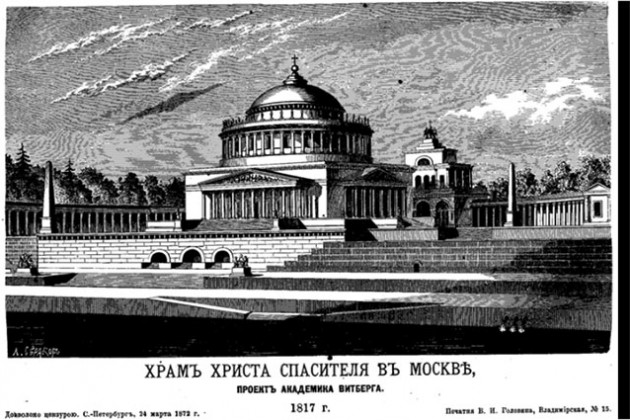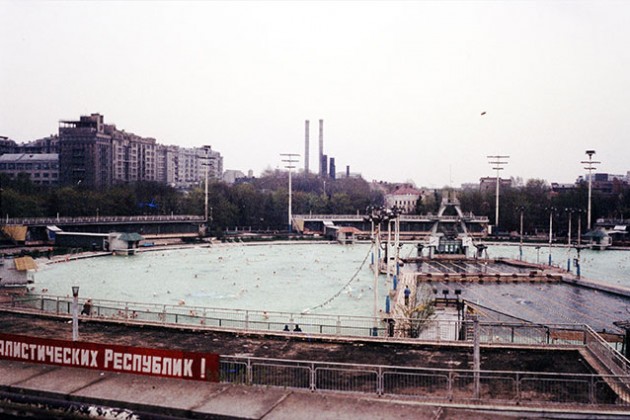Discovering Moscow
The Cathedral of Christ the Savior in Moscow is the largest cathedral of the Russian Orthodox Church and its main symbol. The tragic history of the temple, as in a mirror, reflects the entire history of the relationship between the authorities, the people and the church in the 20th century.
Cathedral of Christ the Savior. Our days.
Olga Vaganova/AiF
History of creation
The idea of building a cathedral Cathedral in the name of Christ the Savior arose after the final victory of Russia over the Napoleonic army in 1812. The construction of the church revived the ancient Russian tradition of votive churches, built as a token of gratitude for the victory.
December 25, 1812 Alexander I signed the Manifesto on the construction of a church in Moscow. As a result of the competition, the project of the artist Alexander Vitberg won, according to which the temple was three times larger than the current one, crowned with a gigantic colonnade and included the Pantheon of the dead.
It is interesting that the architect was a Lutheran, but for the sake of the project he converted to Orthodoxy.
The construction of the cathedral began on Sparrow Hills, where one of the out-of-town royal residences used to be - the Vorobiev Palace. Witberg himself supervised the construction, whose inexperience in such matters led to large-scale embezzlement.
Emperor who ascended the throne in 1825 Nicholas I stops construction due to the unsuitability of the soil, and the leaders are accused of embezzlement and put on trial.
As a new site for the construction of the temple, the territory on the banks of the Moscow River, on Chertolye (Volkhonka), occupied Alekseevsky Convent. The monastery is being demolished, and according to legend, the abbess of the Alekseevsky monastery curses the builders with the words: "This place should be empty." And so it will happen later.
The architect of the Cathedral of Christ the Savior is Konstantin Ton- the author of the Leningrad station and the Grand Kremlin Palace. He designs the cathedral in the then officially adopted Russian-Byzantine style, which meets the tastes of the tsar.
In 1837, a solemn laying of the church took place, and construction began in 1839 and lasted almost 44 years, until the end of the reign of the next emperor - Alexander II.
In 1860, the outer building of the temple was built, and work began on the interior decoration. The design of the cathedral was carried out by artists Vasily Surikov, Ivan Kramskoy, Vasily Vereshchagin and other members of the Academy of Arts. In the lower gallery of the temple, marble slabs were placed with the names of the fallen soldiers and with the names of all the battles of the Patriotic War of 1812.
The solemn consecration of the cathedral took place in 1883 at Alexandra III. The temple becomes the center of not only religious, but also social and cultural life of the country. Coronations, anniversaries and national holidays are held here.

The first project of the temple architect Witberg.
In 1917, during the revolution and the unfolding Civil War, the church, after a 200-year break, restores the institution of the Patriarchate. New Patriarch of Moscow and All Russia Elected at Christ the Savior Cathedral Tikhon. Thus, the temple becomes the center of the church life of the country and the upheavals that have befallen it.
In 1918, by a special decree, the government stops funding churches. Since its construction, the Cathedral of Christ the Savior has not been repaired; colossal funds were required to restore and maintain its life. Then the Brotherhood of the Temple was organized, which, through the efforts of private donors, manages to prolong its work for a short time.
In 1922, Patriarch Tikhon was arrested, and the temple was handed over to the "Renovationists" - the opponents of the Patriarch. Then the idea of building Palace of Soviets, one of the most famous unrealized architectural projects in history. The tallest building in the world was supposed to become a symbol of victorious socialism, and it was decided to build it on the site of the Cathedral of Christ the Savior.
In the summer of 1931, the All-Russian Central Executive Committee issued a resolution: “in view of the allotment of the site, the temple should be liquidated and demolished.”
On December 5, 1931, two explosions were carried out - after the first explosion, the temple survived. According to the recollections of witnesses, powerful blows shuddered not only nearby buildings, but were felt at a distance of several blocks. It took almost a year and a half to dismantle the debris left after the explosion.

Frame of the explosion of the temple. 1931
The construction of the Palace of Soviets, which began in 1937, had to be stopped due to the outbreak of war. The building was dismantled, as building materials were required for the manufacture of anti-tank hedgehogs and other defensive structures. The idea of building the Palace of Soviets was finally abandoned in 1956.
In the post-war years, large-scale construction unfolded in the capital, against which the huge wasteland in the center of Moscow, on Volkhonka, looks ridiculous. In its place, it was decided to make an outdoor heated swimming pool for winter swimming.
So, in 1969 in the capital, on the site of the Cathedral of Christ the Savior, a swimming pool "Moscow". It will work until the early 1990s and will close due to deterioration of communications.

Swimming pool "Moscow". 1980
Temple restoration
In Perestroika, in the late 1980s, a popular referendum was organized for the revival of the Cathedral of Christ the Savior. Thousands of Soviet people put their signatures for the restoration of the church. At the same time, the first funds to raise funds for the construction of the cathedral appeared. But at the government level, the corresponding decision is made only in 1994.
Donations for the construction of the Cathedral of Christ the Savior come from hundreds of thousands of citizens, as well as from Russian and foreign companies.
The project of the new temple was developed by a group of architects led by Mikhail Posokhin and Alexei Denisov, who was later replaced by a sculptor Zurab Tsereteli.
Tsereteli made significant changes to the appearance of the building, distinguishing it from the historical one: instead of a white stone cladding, a marble one appeared, a stylobate part was added, marble high reliefs on the facade were replaced by bronze compositions.
In 2000, after the completion of all work, the new temple was consecrated Patriarch Alexy II. In memory of the Alekseevsky monastery that previously existed on this site, the lower church was consecrated in the subchurch in the name of the Transfiguration of the Lord with side chapels of Alexy the Man of God and the Tikhvin Icon of the Mother of God.
Today, the Cathedral of Christ the Savior is the second largest Orthodox cathedral in the world and the first in height.
Solemn services are held here with the participation of the first persons of the state. A piece of the Holy Fire from Jerusalem is delivered here on Easter night.